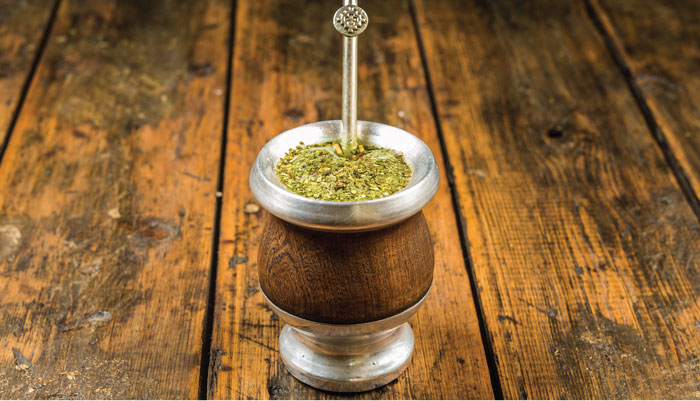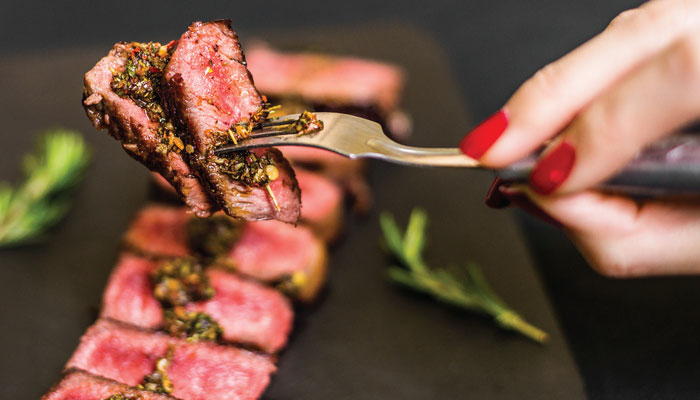Argentina has a rich gastronomic culture, combining the flavours of European dishes with those of indigenous and Creole foods. As such, you are bound to sample some delicious dishes during your holiday to Argentina.
Buenos Aires is particularly renowned for the notable influence of Italian and Spanish cooking. Here, you can also taste Argentinian pizzas (very different to Italian pizzas), stews, milanesas (breaded veal cutlets), pasta, gnocchi and much more.
Argentinian gastronomy is primarily carnivorous, globally recognised for its top-quality meats. Traditional dishes, meanwhile, can vary significantly from region to region. However, certain dishes are very traditional and popular throughout the country, which we are going to focus on today.

History behind Argentinian gastronomy
In the early 20th century, Argentinian gastronomy was discovered at its highest level of destitution and apathy, with the arrival of Italian and Spanish colonisers having a significant impact on the country’s cuisine. Throughout the colonial period and during the 19th century, the local population ate a vast and varied diet.
In family homes of the people in the regions, the main dishes were ‘the rotten pot’ (a type of stew), large amounts of vegetables, fresh-water fish and roasted meats.
It must be mentioned that many of the sweets and confectionary enjoyed in these regions come from Chile, Paraguay and Tucumán. Many of the drinks, meanwhile, such as brandies, wines, infusions and mate, also come from overseas.

These dishes were losing popularity at the turn of the century with local populations, who were eating a relatively unappetising diet based on nothing more than stews, steaks and roast meat. There were some exceptions with a notable French twist, but these were largely restricted to the more affluent population.
The customs began to develop and prosper at the end of the previous century, with the arrival of immigrants leading to the gastronomic revolution that took place in the 1890s. Despite the large Italian influence and twist, British, German and Jewish people also made significant contributions to modern-day Argentinian gastronomy.
Italian customs had a significant influence on the way in which Argentinian people ate during the 20th century. Not only did the Italians bring their own recipes and dishes, but also a series of customs and traditions that are associated with the tasting of food, such as the traditional ‘espaguetadas’ in which families came together on Sundays to taste spaghetti dishes. The Italians were also responsible for implementing the vermouth tradition, also turning Buenos Aires into the location with the third-highest pizza consumption in the world, after only New York and Italy.
Typical and traditional dishes
Argentinian gastronomy is based on the culinary traditions of pre-Colombian Guarani and Andean cultures, with certain contributions from colonial cooking. As mentioned above, the presence of Spanish and Italian cuisine is also notable.
Beef is the main protein found in Argentinian cuisine, traditionally served with various garnishes such as salads, rice or potatoes.
Potatoes have been used since the pre-Colombian periods, often as a garnish. These are hugely popular and are usually served as mashed potato, but they can also be oven-baked, fried and even grilled or roasted, wrapped up in tin foil. Other vegetables commonly found in Argentinian gastronomy include onions, tomatoes, carrots and lettuce, which are found in most typical Argentinian salads.
Argentina also has an extensive range of dairy products, with many products having lactose or a derivative thereof as their main ingredient. Cheese plays a crucial role in Argentinian cuisine, with the country producing 8 different types of cheese.
Dulce de leche, another dairy product that is typical of the region, is frequently used in confectionary.
Spices are also quite commonly used in Argentina. The most popular spices include chilli, pepper, herbs and cumin, all of which are dehydrated and fresh.
Some typical dishes of the Argentine Republic include:
Grill or roast: this dish, popularly associated with Argentina, is prepared with beef meat and viscera, cooked above charcoal.
Carbonada meat and vegetable stew: This typical dish varies from region-to-region. An oven-baked pumpkin is often used as a bowl, which is then stuffed with chunks of pumpkin, meat, tomatoes, peaches, rice, sweetcorn and potatoes.
Locro meat and vegetable stew: this is a wholesome wheat or corn-based stew, containing pork, onion, pepper, beans, spicy chilli and red chorizo.
Empanadas: Much akin to the English savoury pasty, these are stuffed with different fillings. The most common empanada filling is ham and cheese or meat. These are generally oven-baked or fried.

Humita tamale dough: This is a dense dough prepared with sweetcorn, milk, pepper, onion, tomato and chilli. This mix is then spread across corn husks, forming a type of pocket which is tied together with strips of the same husk, before being boiled in salty water.
Naples style milanesa: This is a lump of breaded meat that is fried in oil, which is smothered in tomato sauce, oregano and grated cheese. This is generally served with chips.
Argentinian gastronomy in 1810
Argentinian cuisine was largely affected by the contributions made by diverse currents and influences of immigrants. However, the precedents were already evident in the colonial period, even before the May Revolution.
Argentina has no gastronomic similarity, as is the case of Mexicans and Peruvians, where the domination of native populations showed a way of eating using locally grown foods.
In the period of the May Revolution, a Spanish dominance could already be perceived in the region’s gastronomic traditions. However, starting from the Argentinian pampas, locals began to cook and enjoy the taste of meat as a result of the large number of roaming cattle; a taste that was instilled by colonisers which invaded the length and breadth of the pampas.
This was the origin of the meat-eating habits of the population of modern-day Argentina. Beef was the main staple of the time, back when vegetarians and vegans didn’t exist, and will continue to be so.








